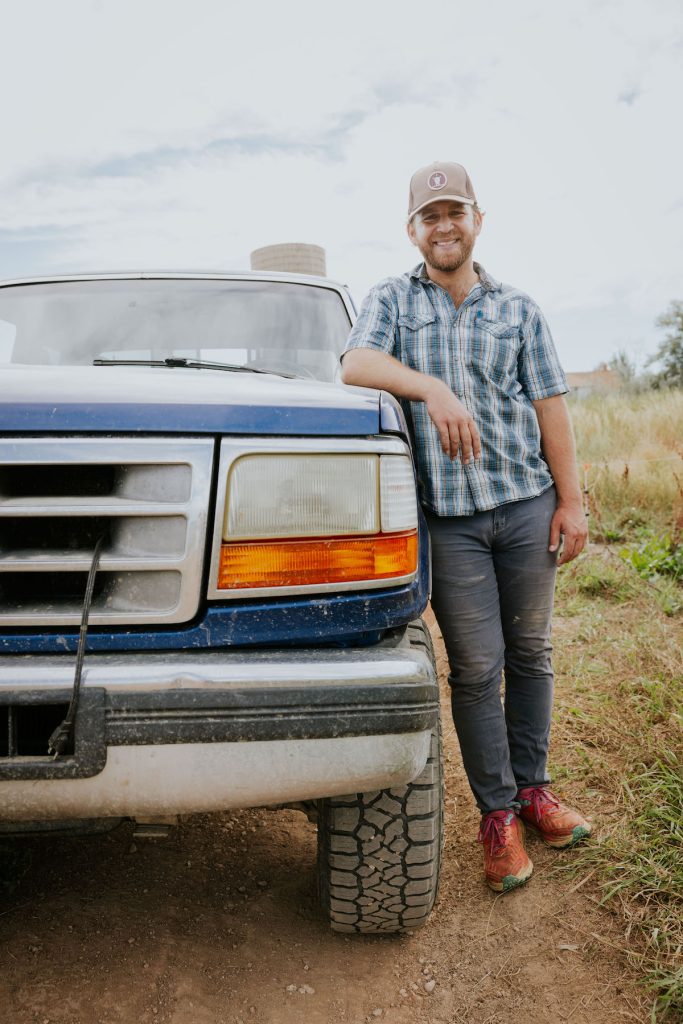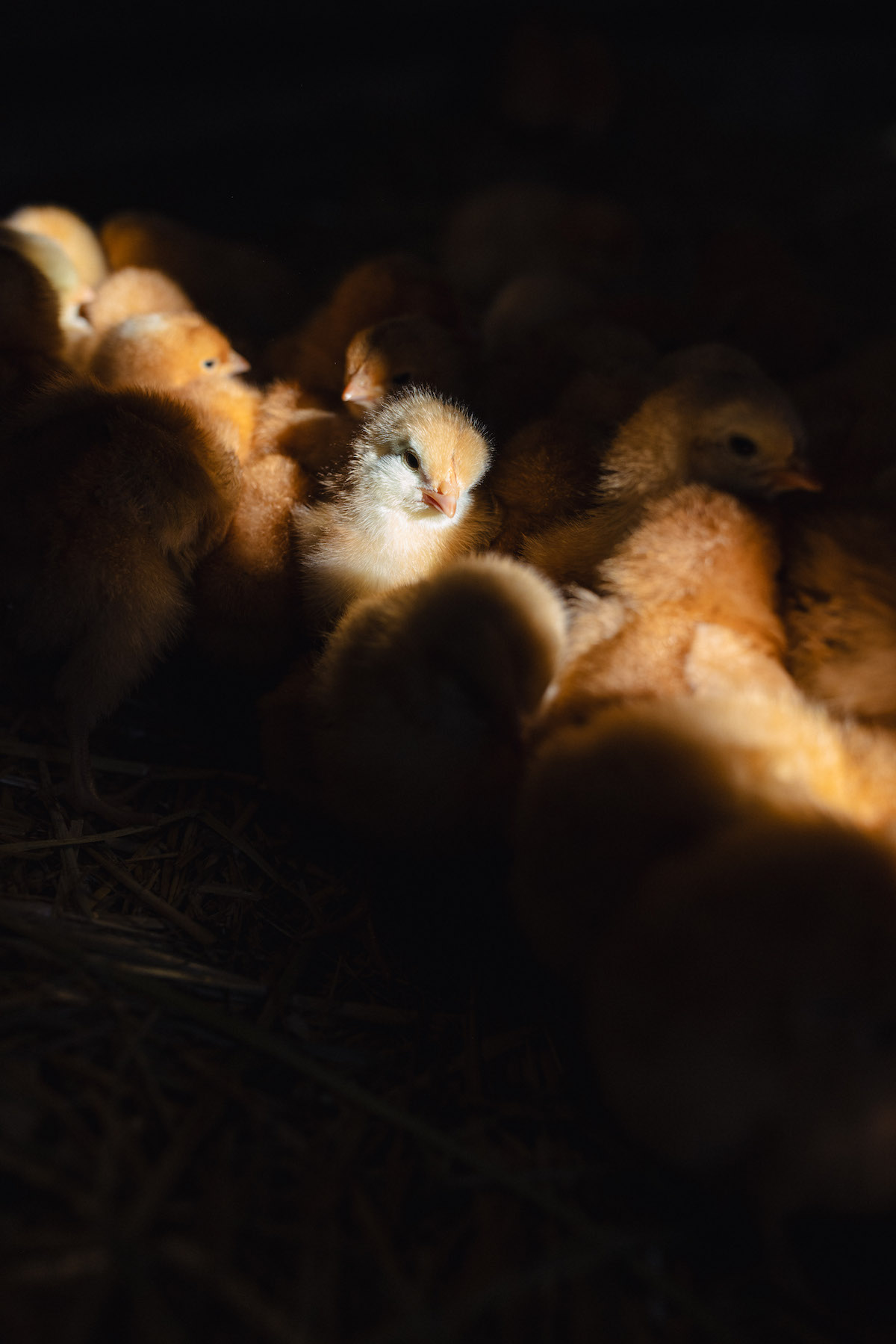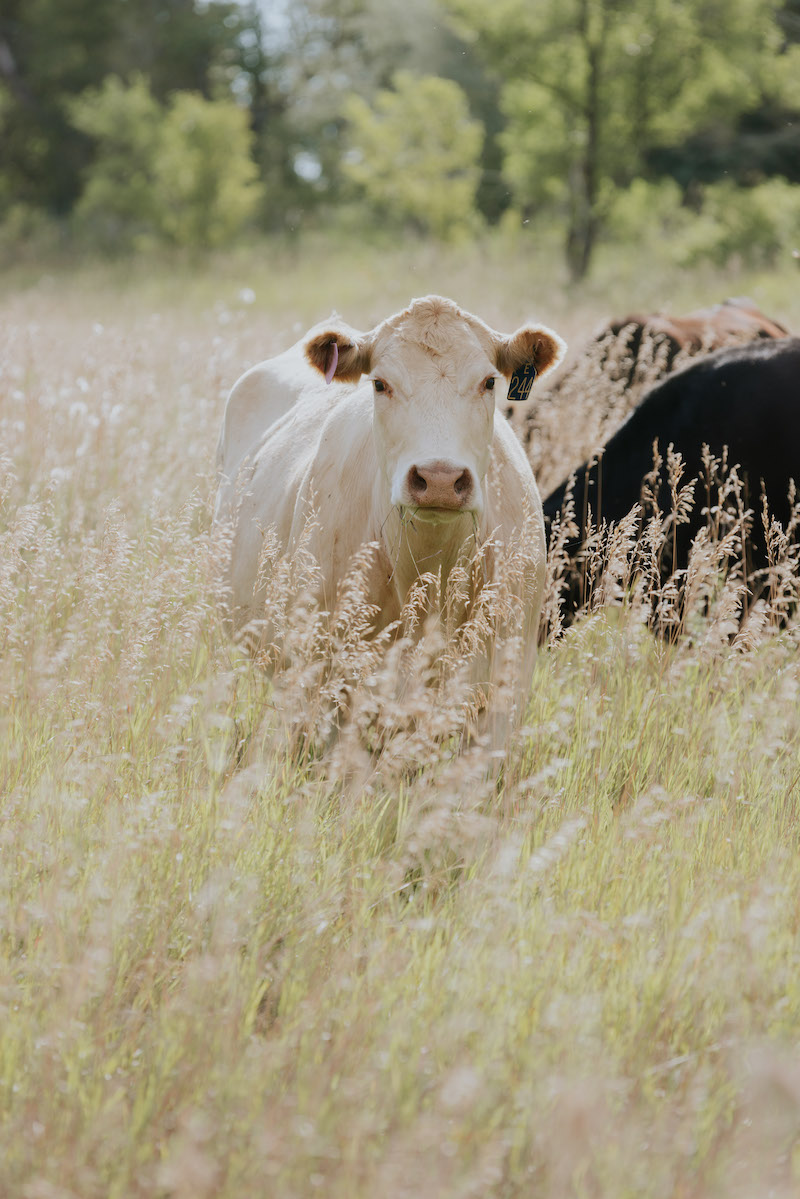Undoing the Beef Between Cattle and Climate
If you ask artificial intelligence to create an image of what a cattle rancher looks like, the result isn’t surprising. Picture a weathered man, likely in his mid-sixties, with a groomed white beard and serious gaze. Of course, he adorns a cowboy hat and polished belt buckle as he stands in an arid landscape surrounded by grazing cattle and misty mountains. It would look lovely framed above the fireplace in any Western cabin, but is this AI-generated cowboy really representative of ranching today?
Andy Breiter, founder and owner of Grama Grass & Livestock, has a different uniform. “I look like an ad for Hoka,” he joked, after rocking the running shoes during a photoshoot at his livestock operation in Longmont. A millennial from Chicago, he spent his college years binging episodes of Anthony Bourdain’s No Reservations and Alton Brown’s Good Eats. After graduating with a degree in business, he worked on farms in Spain through the World Wide Opportunities on Organic Farms (WOOF) program, but still didn’t see himself as a farmer (“I’m not a veggie person,” he explained). When he headed back home, he began working for grocery distributors as a means to channel his passion for food and business, but instead of finding fulfillment, he found himself depressed by the idea of spending another year in Chicago.
Andy Breiter, founder of Grama Grass & Livestock, describes himself as both a cattle rancher and grass farmer.

After finding Allan Savory’s 2013 TedTalk on holistic grazing management, Andy took a leap of faith and drove out to Casper, Wyoming to work on Eagle Ridge Ranch. “Being on the open range in Wyoming is a different kind of beauty,” Andy noted, and from there he developed a love for food that went beyond a fancy dish in Chicago. He devoured books and podcasts on agriculture while sitting in a tractor on the ranch, and quickly learned from his mentors how to responsibly manage livestock to restore natural grasslands and feed his community. His experience in Casper brought him the opportunity to manage operations at The Golden Hoof in Boulder, where he spent nearly three years overseeing the day-to-day operations before he felt ready to take the next step.
In January of 2020, Andy set off on a road trip where he began writing his business plan for Grama Grass & Livestock. What he saw was an opportunity to address land access and management challenges while providing the community with grass-fed and finished beef. It’s not a mistake that the word “grass” appears in their name before “livestock” – the name Grama Grass refers to a genus of grasses native to the Western United States, one of the many parts of the natural ecosystem that Andy works to restore through holistic livestock management. Grama Grass partners with private and public landowners to systematically rotate cattle to manage invasive weeds, fertilize the soil, and build strong root systems that help keep carbon in the soil and out of the atmosphere. This means healthier grasslands for the land owners, and nutritiously fed cattle for consumers.
As we collectively look for solutions to climate change, cattle are often in the crosshairs for their methane emissions and overgrazing that resulted from decades of negligent herd management. While we’ll leave the scientific debates to those qualified to lead them, the choice for consumers remains: if you are going to consume beef, which practices are you going to support? For Andy, the answer comes “when I walk through the field and can hear the grasshoppers, see the dung beetles, and listen to the birds that live alongside my cattle,” he shared.
Customers can find Grama Grass & Livestock at the Boulder Farmers Market every Saturday from 8AM to 2PM. Through October 25, Grama Grass is selling a Winter CSA, in which customers can receive 6 months of beef, pork, and other perks through a one-time purchase. Learn more at gramagrasslivestock.com.
This story and photography was produced as part of the Farm to Market Masterclass. Photography by Eliza Earle.





